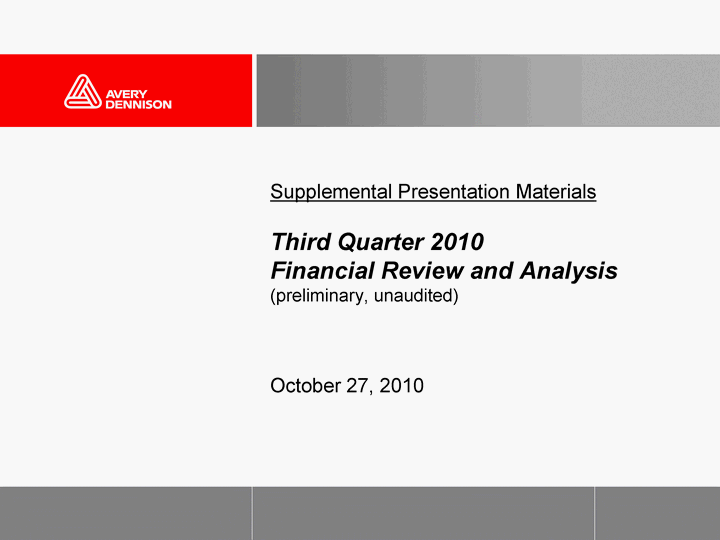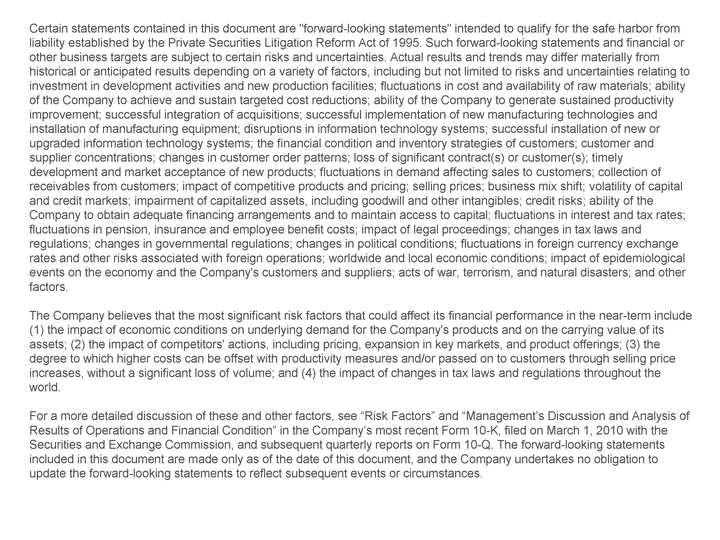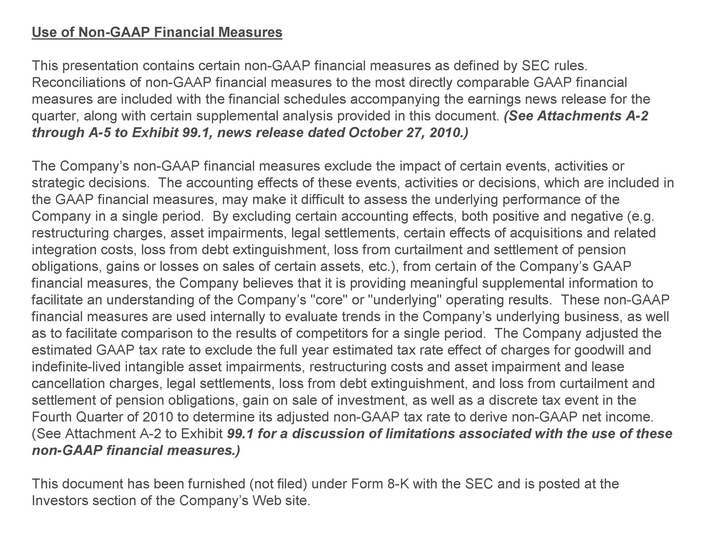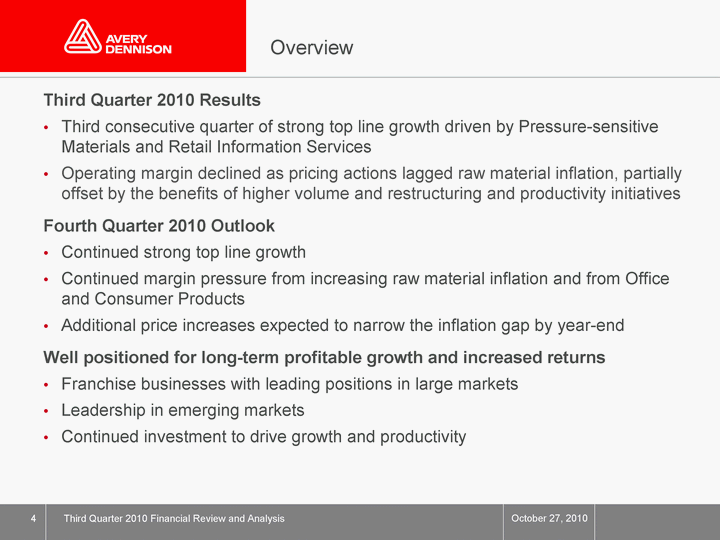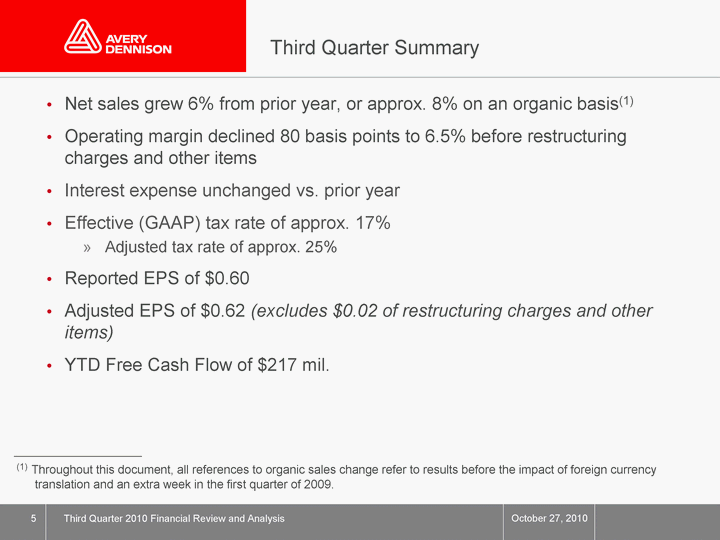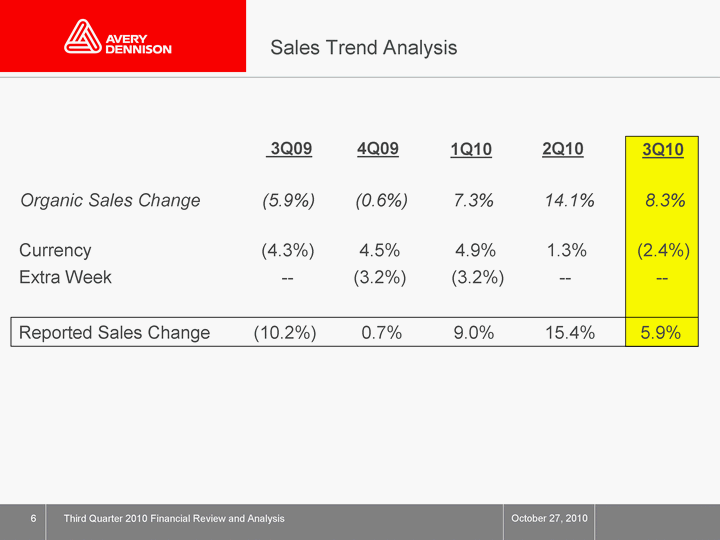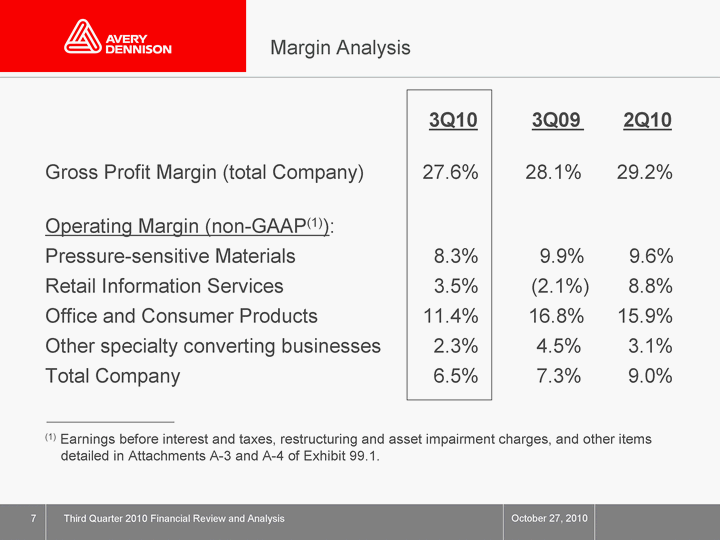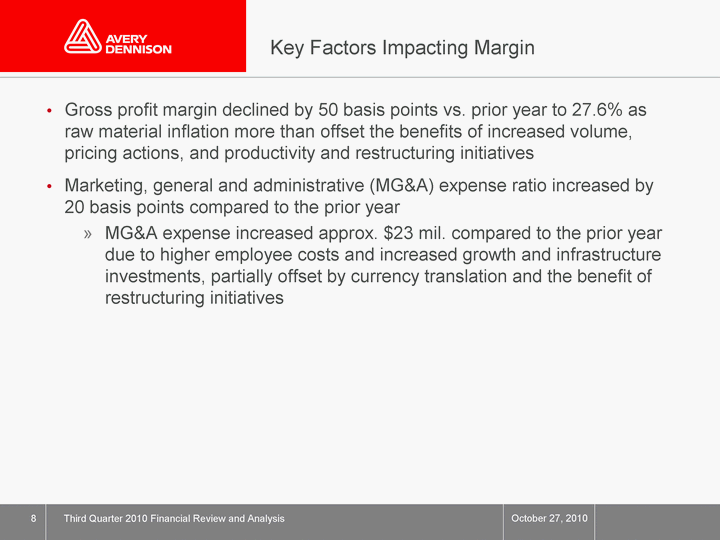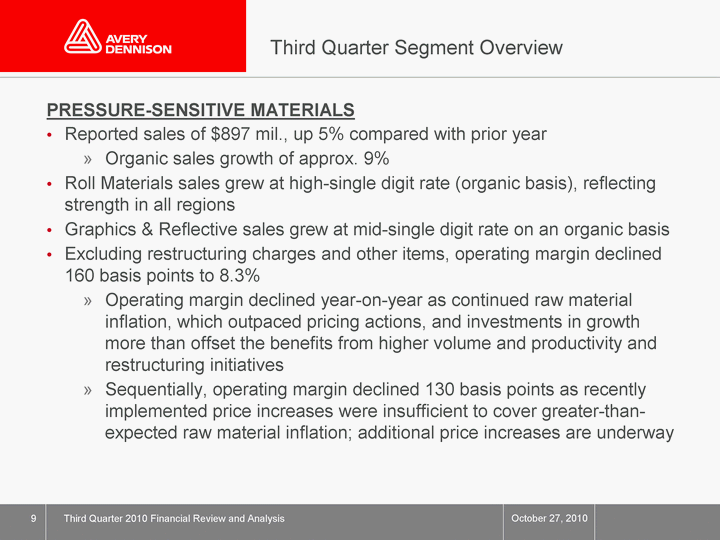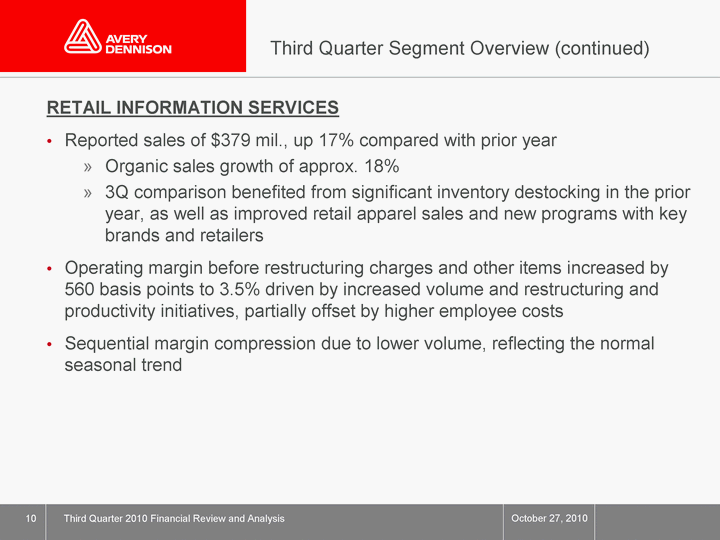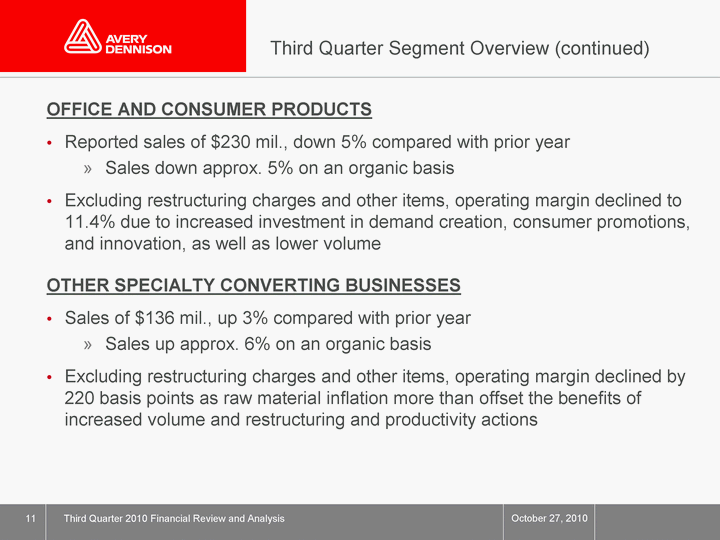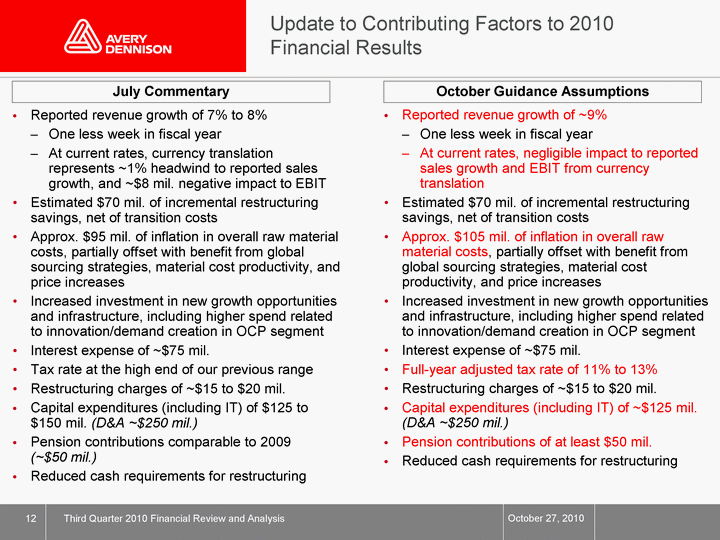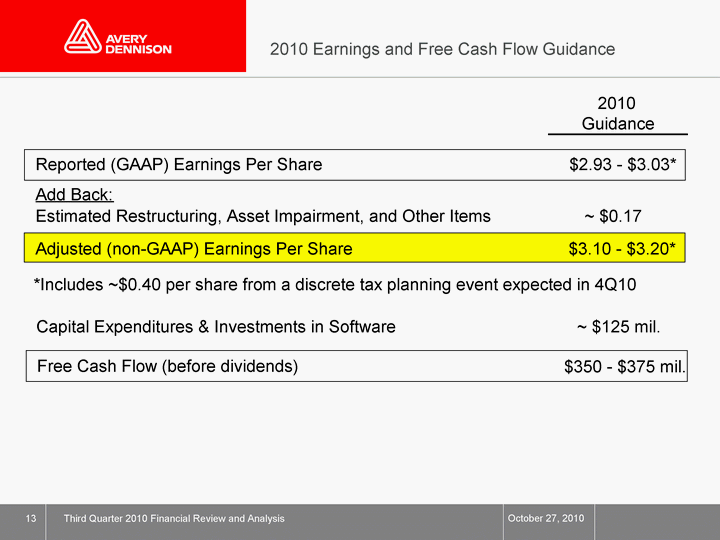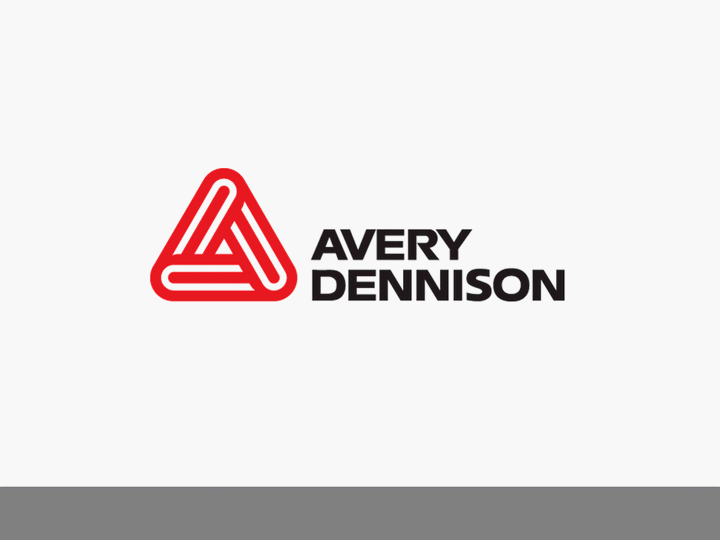Free signup for more
- Track your favorite companies
- Receive email alerts for new filings
- Personalized dashboard of news and more
- Access all data and search results
Filing tables
Filing exhibits
Related financial report
AVY similar filings
- 15 Dec 10 Departure of Directors or Certain Officers
- 15 Nov 10 Other Events
- 4 Nov 10 Departure of Directors or Certain Officers
- 27 Oct 10 Avery Dennison Announces Third Quarter 2010 Results
- 28 Jul 10 Avery Dennison Announces Second Quarter 2010 Results
- 28 May 10 Departure of Directors or Certain Officers
- 27 Apr 10 Avery Dennison Announces First Quarter 2010 Results
Filing view
External links
